Wondering what and how the deserts in Africa are? Look no further! This article has everything you would wanna know about the African deserts!
The vast continent of Africa is known for a lot of things, including its large and varied desert regions.
There are many deserts in Africa, thanks to the continent’s vast size and diverse biomes.
As you’ll see, the North African deserts are very different from South African deserts; each area is well worth getting to know.
After reading this post, you’ll understand more about African deserts and what makes them special.
Deserts in Africa
Here are the 10 most incredible deserts in Africa in descending order.
1. Sahara Desert
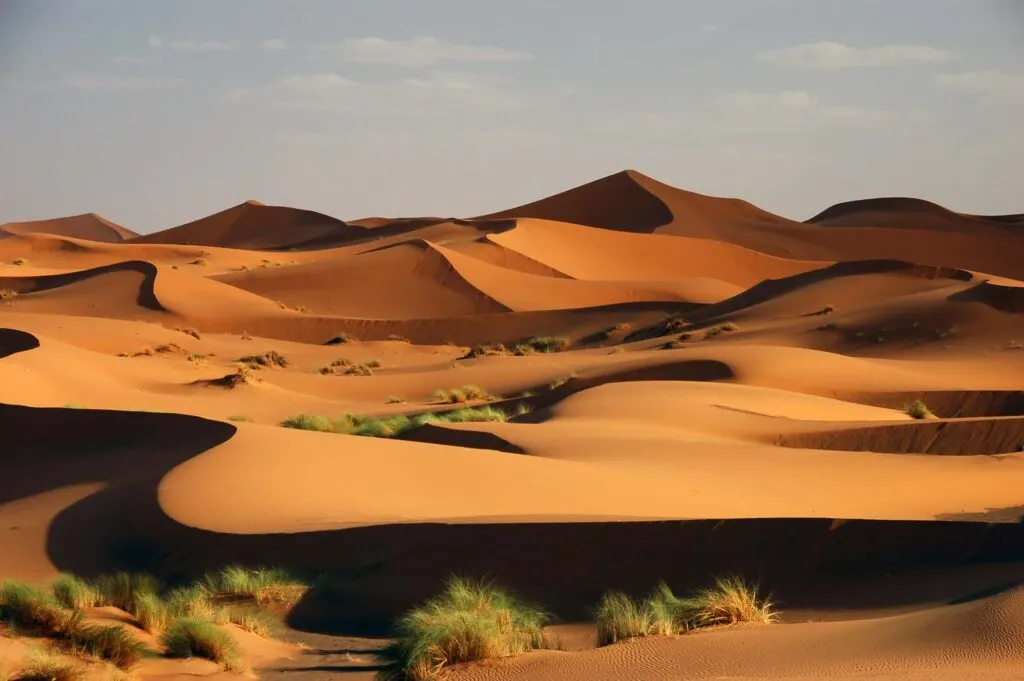
- Surface Area: 3.5 million square miles
- Desert Type: Subtropical
The Sahara Desert is vast – the largest desert in Africa. It spans 12 countries in North Africa: Algeria, Chad, Egypt, Eritrea, Libya, Mali, Mauritania, Morocco, Niger, Western Sahara, Sudan, and Tunisia.
About 4 million people live in the Sahara Desert, mostly in Mauritania, Western Sahara, Algeria, Libya, and Egypt.
For such a massive desert, it’s no wonder it’s made up of a lot of regions that include sand dunes, salt flats, rock plateaus, gravel plains, and dry valleys. The desert is ever-changing, always shrinking and growing in size.
The Sahara is also the largest hot desert in the world. During the summer, temperatures can reach up to 122°F.
In addition to its large number of human inhabitants, the Sahara is home to an impressive array of animal life.
Gerbils, jerboa, cape hares, desert hedgehogs, barbary sheep, oryx, gazelles, deer, wild donkeys, baboons, hyenas, jackals, sand foxes, weasels, mongoose, and over 300 species of bird can be found living in the Sahara, one of the largest deserts in the world.
2. Karoo Desert
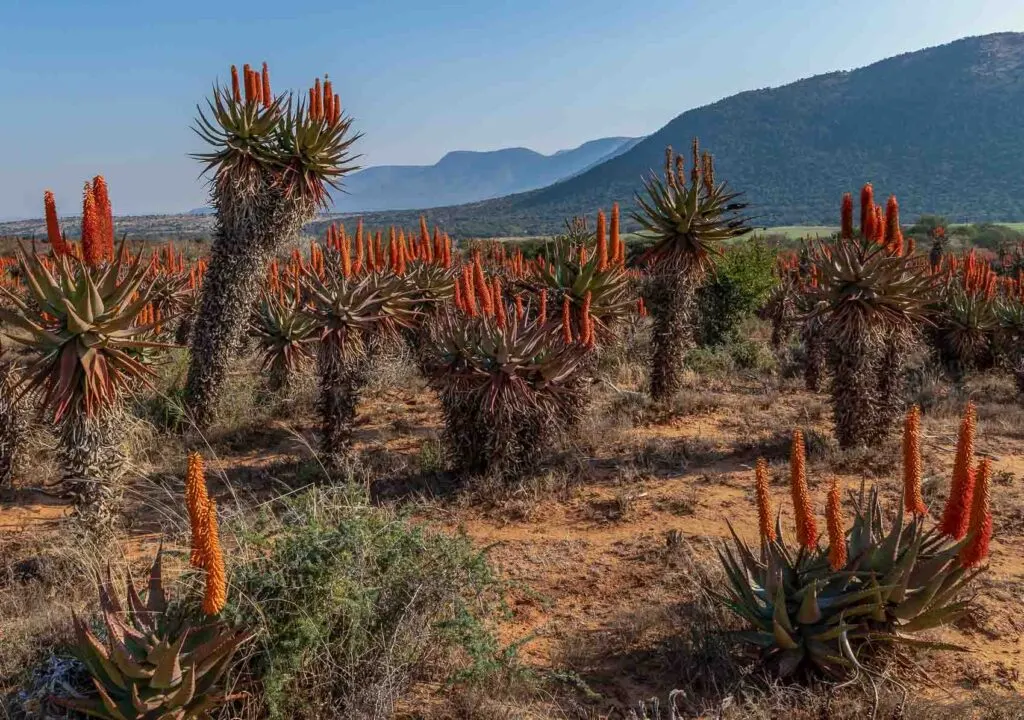
- Surface Area: 153,000 square miles
- Desert Type: Semi-Desert
The Karoo Desert is located in South Africa. It has a rich range of animals, including antelopes, quagga, wildebeest, riverine rabbits, locusts, lions, leopards, cheetahs, African wild dogs, hyenas, jackals, and ostriches.
This massive desert is split into two distinct regions: the Succulent Karoo Biome to the west and the Name Karoo Biome that covers most of South Africa’s southern interior plateau.
The Succulent Karoo has the world’s richest array of succulent plants – an estimated 10,000 succulent species!
Underground water sources can be found all across the Karoo, allowing for grazing and human use.
3. Kalahari Desert
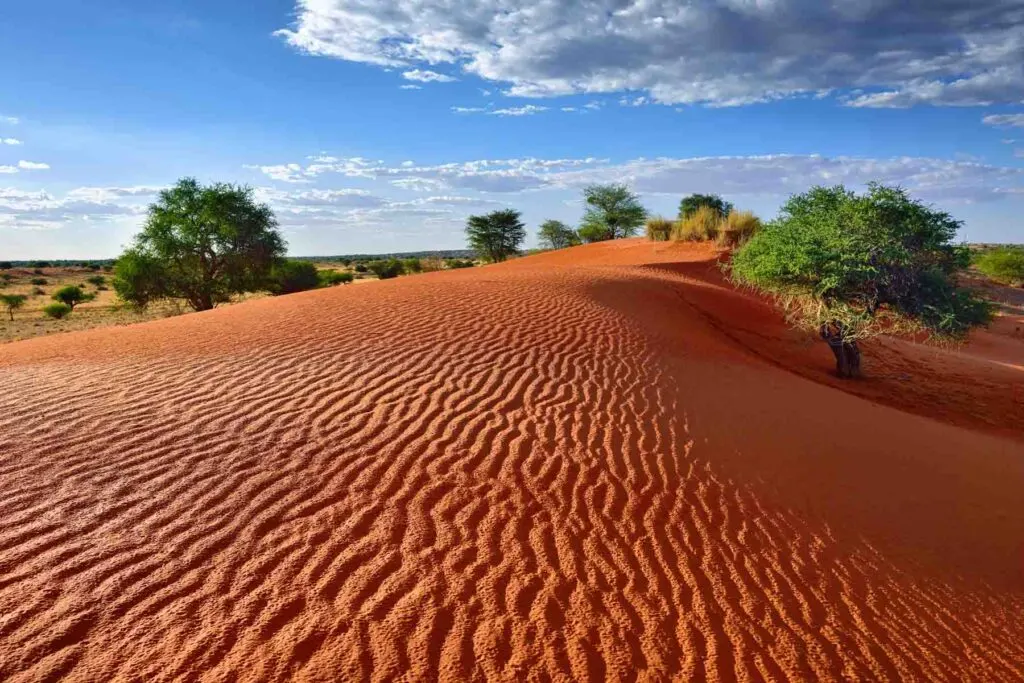
- Surface Area: 360,000 square miles
- Desert Type: Subtropical
The Kalahari stretches across Botswana, Namibia, and South Africa. The wind has eroded the sandy terrain to form distinctive soft stone formations.
Gasses, thorny shrubs, and acacia trees manage to survive the long drought periods lasting more than 10 months at a time.
Brown hyenas, lions, meerkats, antelopes, birds, and reptiles make this desert their home.
Some scientists don’t actually consider the Kalahari a true desert because certain parts of it receive more than 10 inches of annual precipitation (the threshold for what’s considered a desert).
4. Danakil Desert
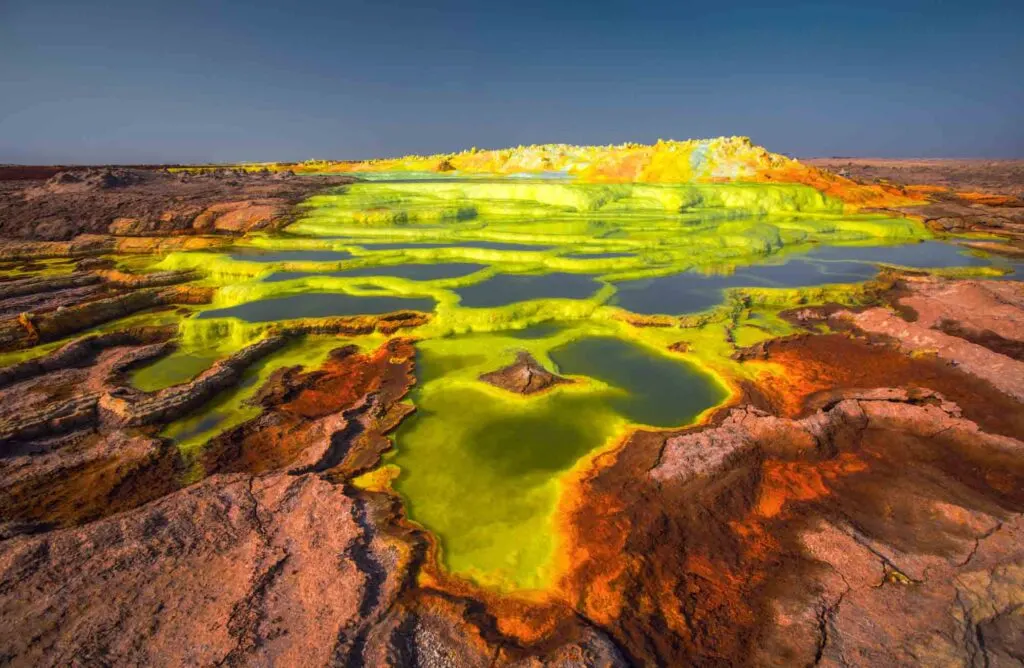
- Surface Area: 52,900 square miles
- Desert Type: Arid
The Danakil Desert of Djibouti, Eritrea, and Ethiopia has one of the most extreme environments in the entire continent of Africa.
The landscape is punctuated with lava lakes, hot springs, volcanoes, geysers, and even multicolored salt lakes.
This desert is one of the lowest, hottest places on earth, receiving less than an inch of rainfall each year and scorching temperatures that can reach up to 122°F.
Nevertheless, several species manage to brave the temperatures to make the Danakil their home, including oryx, ostriches, vultures, and several species of bird.
5. Chalbi Desert
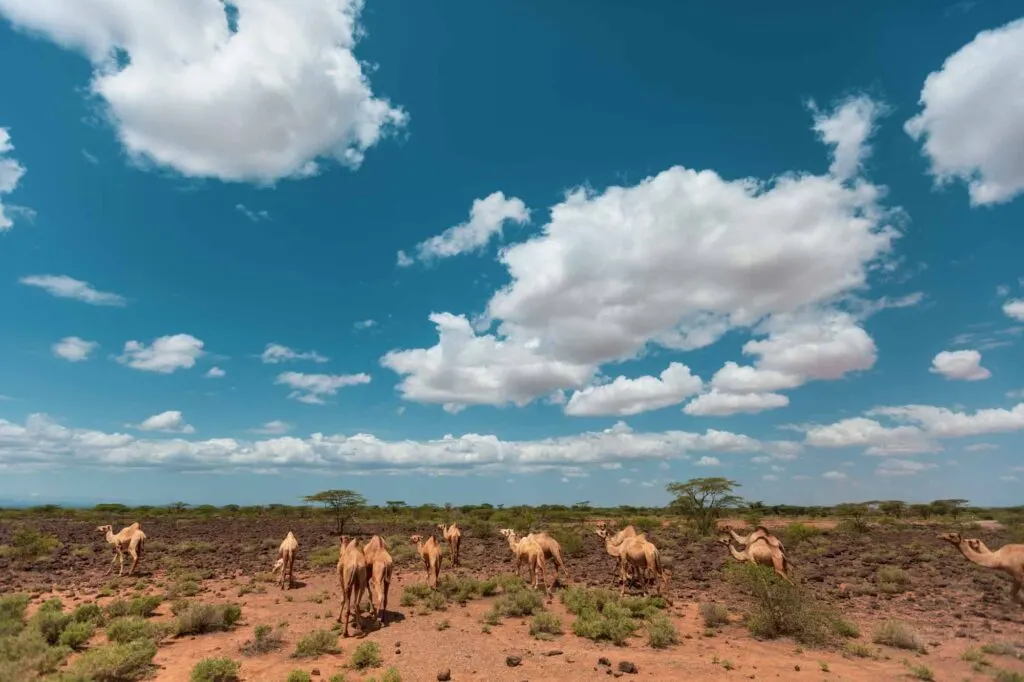
- Surface Area: 38,600 square miles
- Desert Type: Arid
Located east of Lake Turkana, the Chalbi Desert is one of the hottest and most arid environments in Kenya. This is unsurprising, considering its name is derived from the Gabbra language word for “bare and salty.”
This old river bed is dotted with rocks and dried clay formations, creating a striking and picturesque landscape.
If you spot any wildlife in the Chalbi, it’s most likely an oryx, ostrich, or zebra.
6. Namib Desert
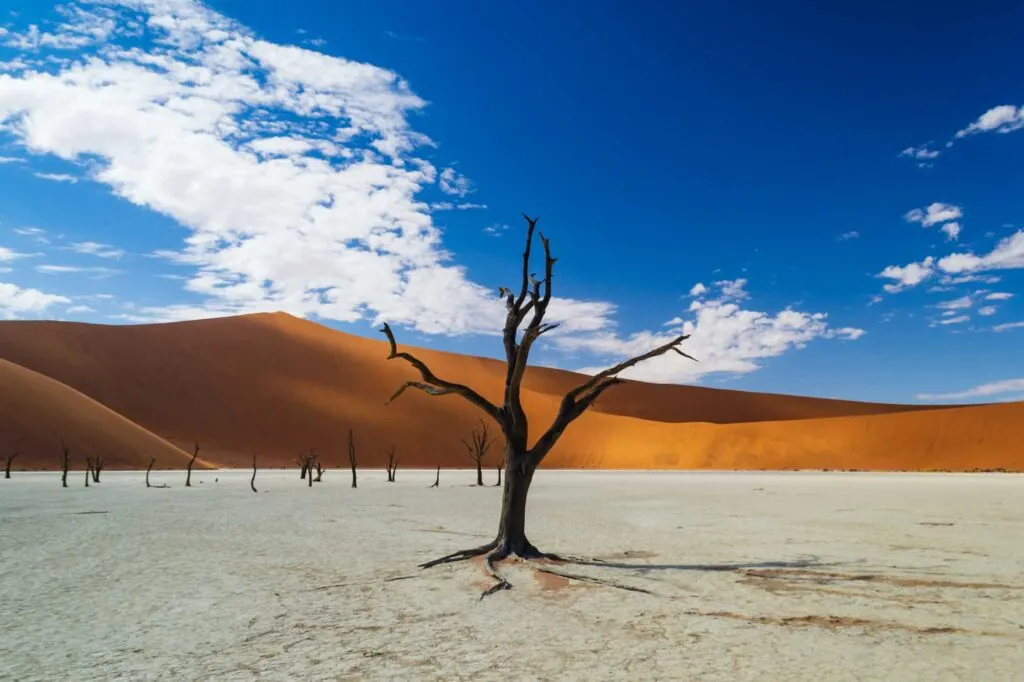
- Surface Area: 31,275 square miles
- Desert Type: Cool Coastal
The word “Namib” means “vast” in the Nama language – an apt descriptor for this desert in southern Africa. The area is made up of the highest sand dunes on the planet, comprised of wind-blow sand formed into sharp ridges.
The Namib Desert is thought to be the oldest desert in the world, having been arid or semi-arid for at least the past 80 million years.
Extending along the Atlantic coastal region of Southern Africa, Namib Desert spans across Angola, Namibia, and South Africa.
The Namib Desert is home to baboons, leopards, hyenas, cheetahs, klipspringer, zebras, and even wild desert horses.
7. Guban Desert
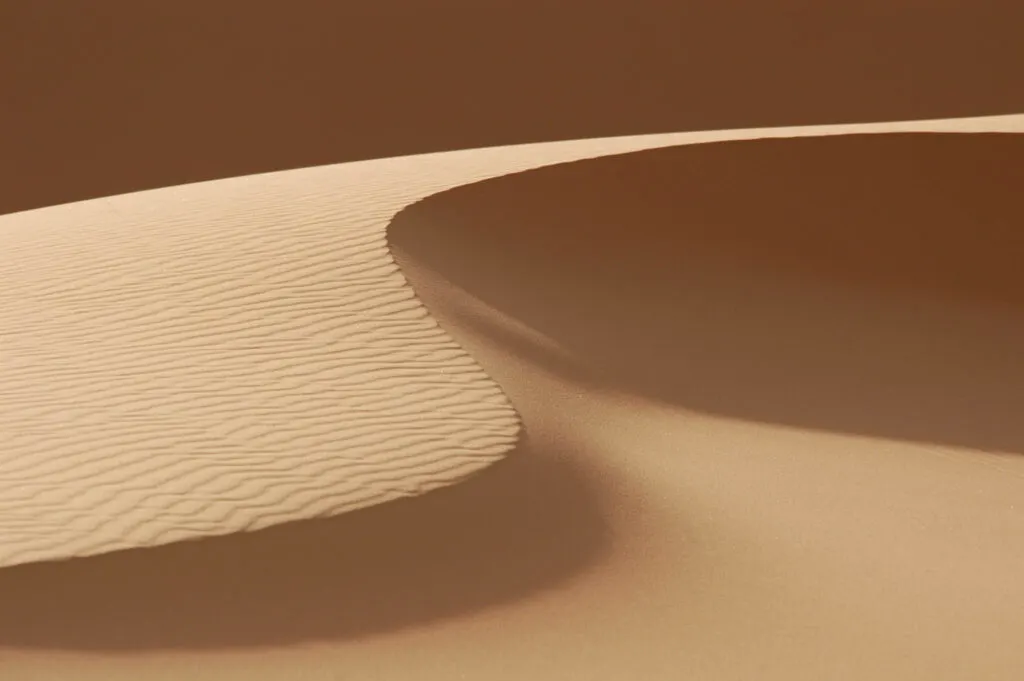
- Surface Area: 2,702 square miles
- Desert Type: Arid
These hot, dry plains form a narrow strip of land running between the Somalian cities of Zeila and Berbera.
This coastal desert is extremely hot and humid, with about two inches of rainfall annually. Local clans raise their camels and goats near the Guban permanent wells in the nearby Galgodon Highlands.
Sandy seasonal watercourses provide moisture for sparse steppe vegetation.
8. Nyiri Desert
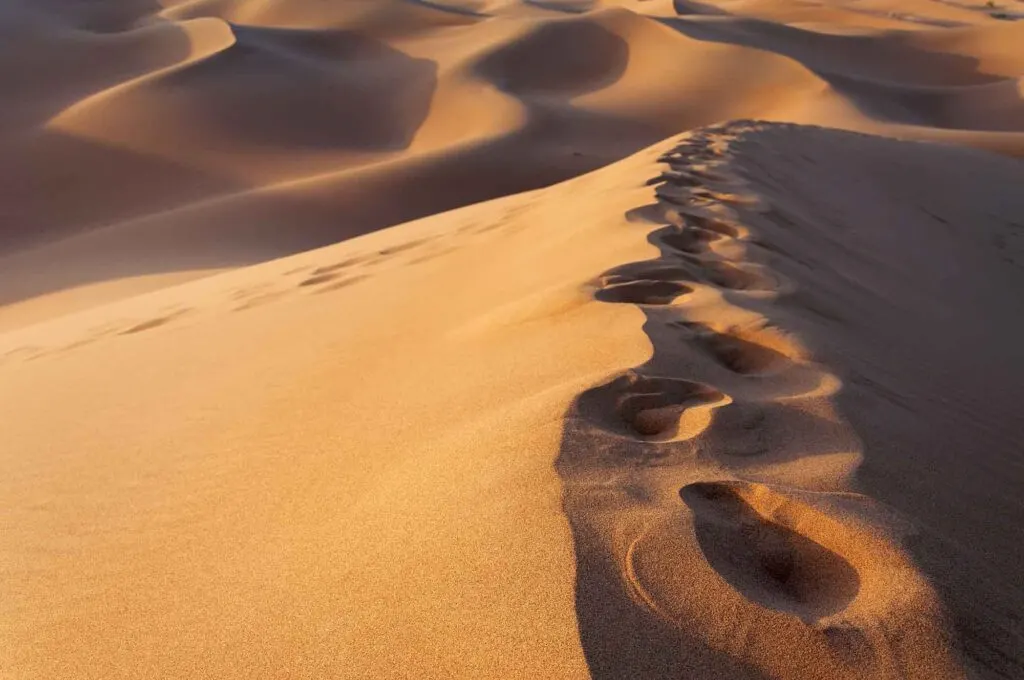
- Surface Area: 270 square miles
- Desert Type: Arid
The Nyriri Desert is also known as the Nyika or Taru Desert and is located in Kenya.
It’s positioned in the rain-shadow region of Mount Kilimanjaro (Africa’s highest mountain), which explains the extremely low levels of rainfall the Nyiri receives.
Several large springs support large mammals like elephants, rhinoceros, giraffes, lions, leopards, and kudu. These springs also provide water for small, thorny trees and baobabs to survive.
9. Grand Bara Desert
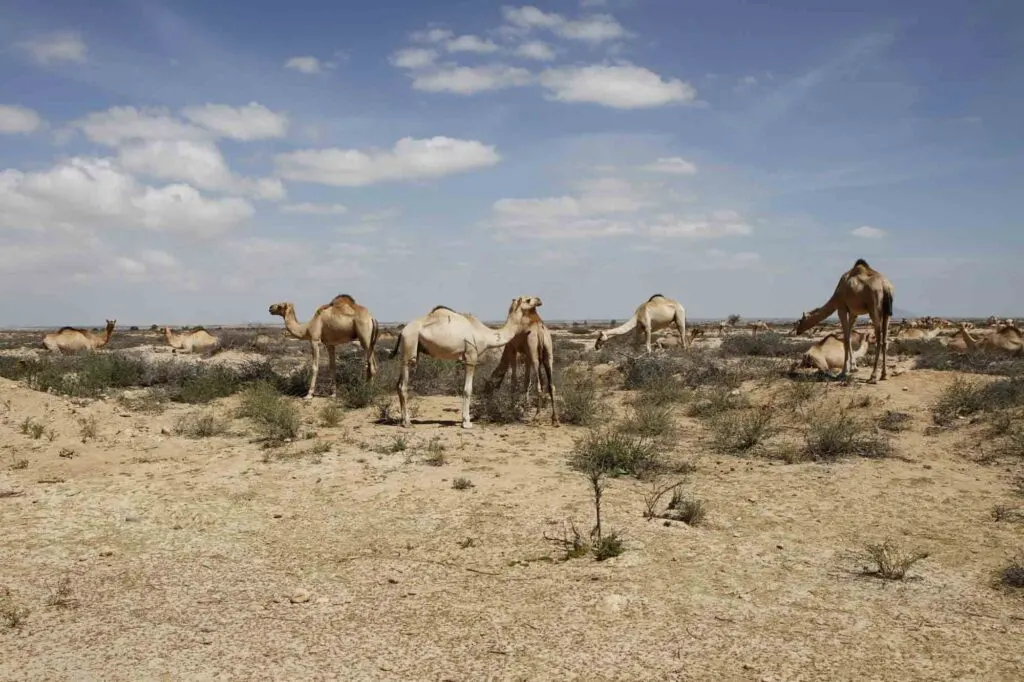
- Surface Area: 39.77 square miles
- Desert Type: Arid and semi-desert
The Grand Bara Desert is located in a dried-up lakebed in the country of Djibouti.
Today, it’s made up of large sand flats with patches of sparse desert grasses and shrubs. This flat and infertile land contains no bushes or trees.
But several large species of mammals have managed to adapt to the region, including dik-dik and oryx.
10. Lompoul Desert
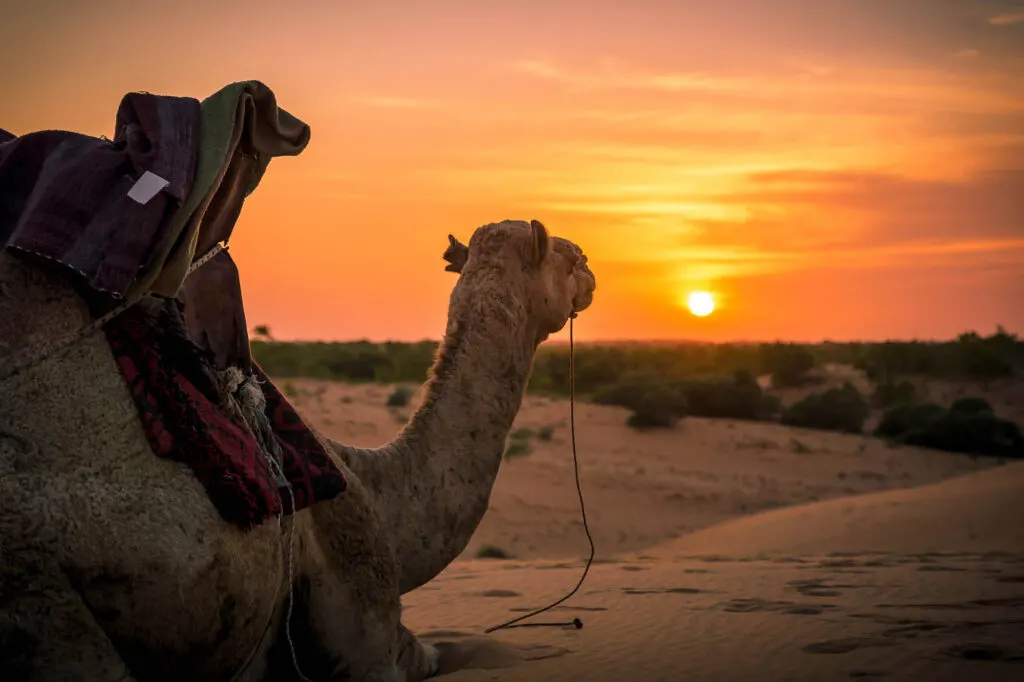
- Surface Area: 6.95 square miles
- Desert Type: Arid
Africa’s smallest desert is a surprisingly popular tourist destination, thanks to its large orange sand dunes that make an excellent vacation.
The dunes are often compared to the Sahara and Namib deserts but in a much smaller location.
Locals put on a music festival called “Festival du Sahel” inside the desert every year. This small desert is located in Senegal, between the cities of Dakar and Saint-Louis.
FAQ About Deserts in Africa
What Is a Desert?
A desert is a large dry region where there is very little water (up to 10 inches/year) and few plants or animals.
Most deserts are covered in sand, rocks, and dirt, but you can also find a few deserts covered in snow.
They often have extreme temperatures with a huge difference from day to night.
What Are The Four Major Deserts of Africa?
Africa has many dry regions, but the four largest deserts are the Sahara, Kalahari, Karoo, and Namib.
Did you enjoy learning about these African deserts? Then share it with your friends!
